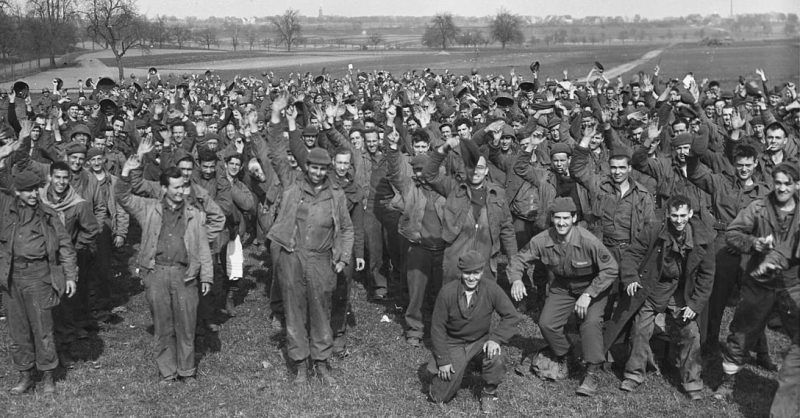36 men ignored the overpowering stench of human waste, dropped through a toilet into a latrine and walked through the 150-foot-long tunnel to freedom from Stalag XXI-B in 1943.
Stephen Dando-Collins discovered the tale of 250 Americans who escaped the clutches of the Nazis while marching in 1945 and made them the subjects of a new book: “The Big Break: The Greatest American WWII POW Escape Story Never Told.”
The story begins with the latrine escape from Stalag XXI-B by Canadian pilots in 1943. The plan to escape through the latrine was invented by Eddy Asselin and Bill Ash. Ash was a chronic escape artist having made 13 attempts in three years. His exploits were said to influence Steve McQueen’s character in “The Great Escape.”
The prisoners spent weeks lowering themselves into the latrine and extending the 2×2 latrine into the 150’ tunnel that led to a farmer’s potato field. A Polish teenager, Stefania Maludzinska, risked her life to get forged documents for the escapees. She spent the rest of the war in hiding, fearing reprisals.
36 men made the escape. A week later, they had all been recaptured and sent to other prison camps.
That year Stalag XXI-B was renamed Oflag 64 and made a prison for American officers.

On January 21, 1945, over 1400 American POWs were lined up for a forced march, evacuating Oflag 64. The forced march became an opportunity for a record number of POWs to escape.
The march was known as the Schubin column and marched all the prisoners except 100 in the hospital to be liberated by the Soviets and Allied forces.
As the march began, one soldier slipped away and snuck back into the hospital.
All told, over 250 soldiers escaped to mingle with the tens of thousands of homeless Germans who were themselves escaping the approaching Red Army.
At a pit stop, soldiers hid in haystacks and throughout a farmhouse. The march left without them.
Throughout the rest of the march, soldiers slipped away in groups or in pairs.
When the Americans were repatriated, they were forced to sign secrecy agreements, so their stories were never told. The government was concerned that their stories would weaken morale at home.
After escaping the Nazis, the Americans had to hide from the Soviets who would hold them at gunpoint and steal anything of value from them. Some escapees even returned to Oflag 64 for safety.
Three Americans made it to Moscow where they briefed Major General John Deane, the head of military mission, on the treatment they received from the Soviets.
Deane was informed by General K.D. Golubov, the head of Soviet internal affairs, that Moscow was not going to comply with the repatriation agreement. The Red Army made a point of tracking down and capturing American POWs on the lam in Germany.
The prisoners that had been left in the Oflag 64 hospital became hostages being held until Soviet soldiers captured behind Allied lines had been returned.
The POWs who continued on the march were taken to Hammelburg, a 340 walk in the dead of winter. They arrived on March 9.
General George Patton’s son-in-law was one of the prisoners in Hammelburg. This led to the disastrous rescue attempt ordered by Patton.
Patton ordered the 4th Armored Division to rescue the POWs and selected Captain Abraham Baum to lead the attack.
Patton felt that 300 men were enough while Baum and his superiors argued for 3,000 men.
Baum’s tactics, though spearheaded quickly and deeply into German territory. The Germans believed that this was the beginning of a full American offensive and sent reinforcements to support their defense.
Somehow, Baum fought his way into Hammelburg with only half his force remaining.
Inside, they found 1600 captives, more than they could take out of the camp. Worse, Patton’s son-in-law was injured and could not be moved.
Hundreds of POWs climbed onto tanks, and the rest walked beside them. But the German support had arrived and, only six miles from camp, the fighting was so bad, many POWs walked back to camp with white flags.
In the end, Baum and his crew were added to the POWs.
Days later, the camp was liberated. Patton’s personal physician flew in on a Piper Cub and personally took Patton’s son-in-law to a top-grade medical facility, NY Daily News reported.
Out of the 250 escapees from Schubin, all but one or two made it home alive. Based on the numbers, it was the greatest escape of the war.
